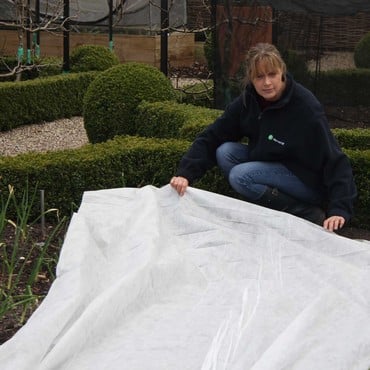Asparagus
EASE OF GROWING: (Scale 1-5): 2
HOW TIME CONSUMING:
Asparagus is not very time consuming at all. It is a perennial vegetable and, once planted will require very little attention other than watering and a good mulch of organic matter in the spring.
RECOMMENDED VARIETIES:
‘Backlim’ F1 AGM
‘Gijnlim’ F1 AGM
HOME GROWN VS SUPERMARKET:
Asparagus is very expensive to buy in the supermarket, whereas grown at home will cost very little after the initial purchase of the plants. It is such a delicious vegetable that it is worth the space it occupies.
BEST SITES AND SOILS:
Asparagus likes a sunny sheltered site in which to grow. It does not like soggy, waterlogged soils or any spot that is a particular frost pocket. It is an ideal crop for growing in a raised bed which is how we grow it in Stephanie’s kitchen garden. It likes a rich fertile soil with plenty of organic matter added to it. Asparagus will enjoy a good mulch of well rotted manure or compost in the spring.
WHEN TO PLANT/DISTANCE BETWEEN PLANTS:
The best way to plant an asparagus crop is to plant crowns as it is easier than growing from seed. Crowns are best planted in March/April in a trench 12 inches wide and 8 inches deep. Add well rotted organic matter to the base of the trench before placing the crowns 12 inches apart with roots spread out. Back fill the trench with soil. Allow 18 inches between rows.
WHEN TO HARVEST:
Asparagus should not be harvested until the third year after planting. Patience is a definitely a virtue when it comes to this crop! Established crops can be harvested from April when the first spears appear from the soil. Cut the spears when they are 6 inches tall using a sharp harvesting knife. Scrape away the soil at the base of the spear, cut the spear 2 inches below the soil level and replace the soil into the hole. Stop harvesting at the end of June to allow the plant time to recover.
FURTHER INFORMATION:
In April give the crop a feed with blood, fish and bone and do this again when harvesting has finished. Plants will require staking as the roots can be damaged if the top growth is rocked by high winds. Cut back the foliage down to ground level once it has turned yellow in the autumn. Keep asparagus weed free by hand weeding. Do not hoe the crop as this can damage the crowns.
PROBLEMS TO LOOK OUT FOR:
Slugs love a good meal of asparagus. Apply nemaslug to the bed every six weeks from March until October to keep slugs at bay.
Asparagus beetle can be a problem, eating the foliage and the new spears. It arrives during May and can be seen as it is about 8mm long and is black and yellow. These can be picked off and disposed of. Make sure that the bed is kept clear of debris in the winter to prevent these overwintering. If your plants have suffered from asparagus beetle, burn the cut foliage in the autumn.
Late frosts can cause damage to emerging spears. Have your fleece handy to cover the crop if any frosts are forecast.


























